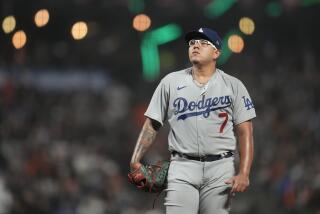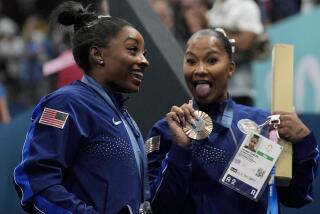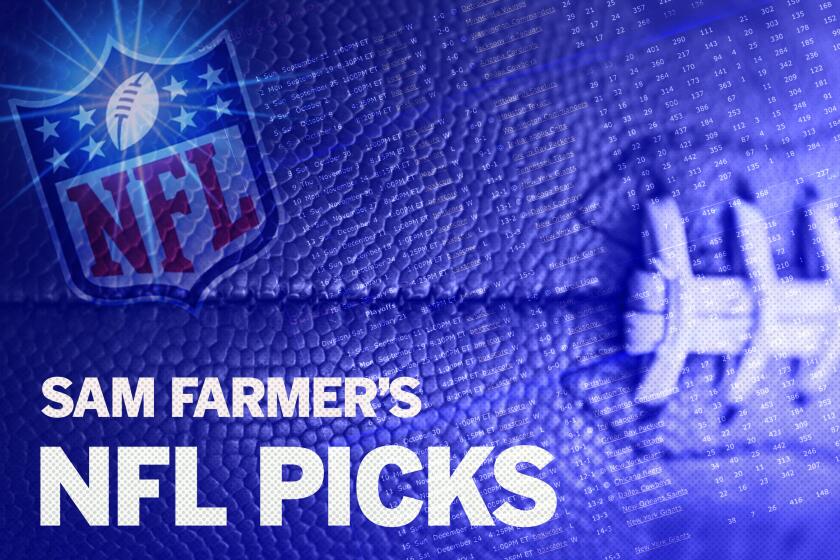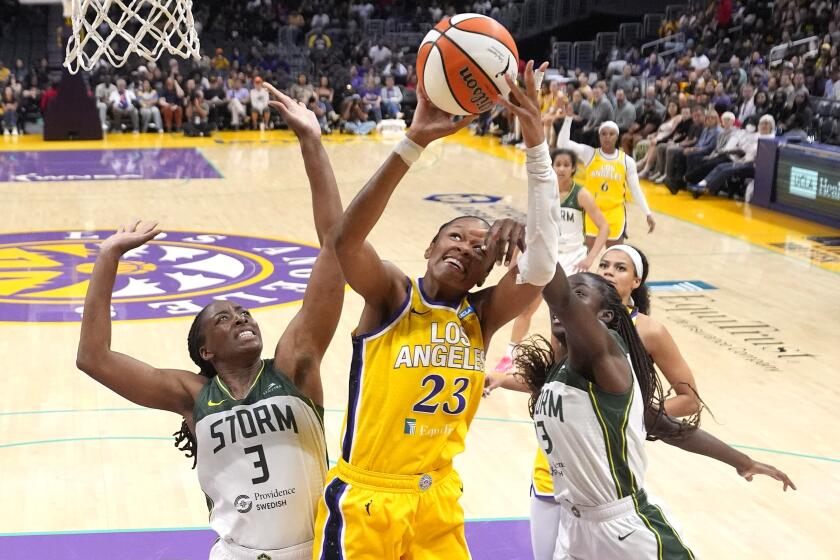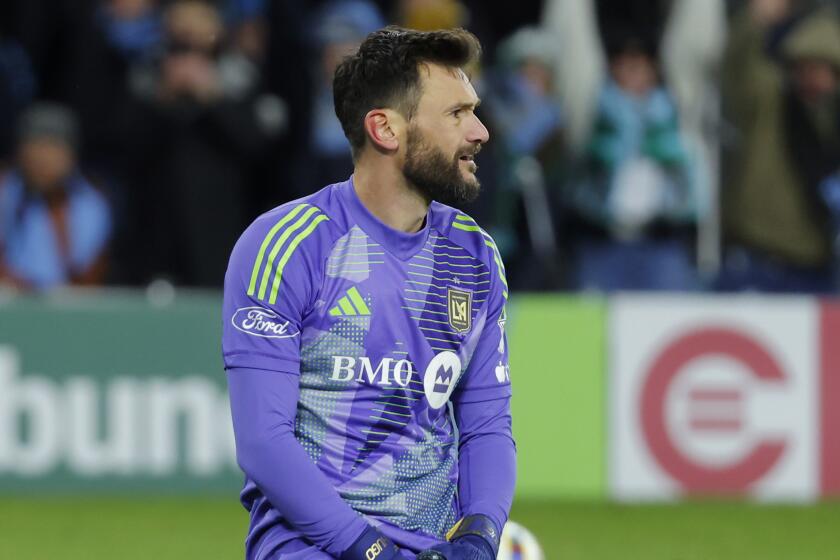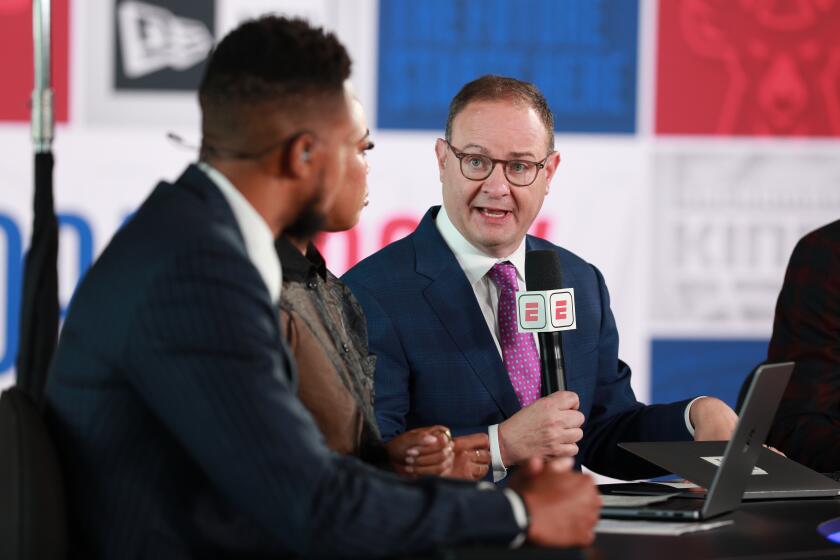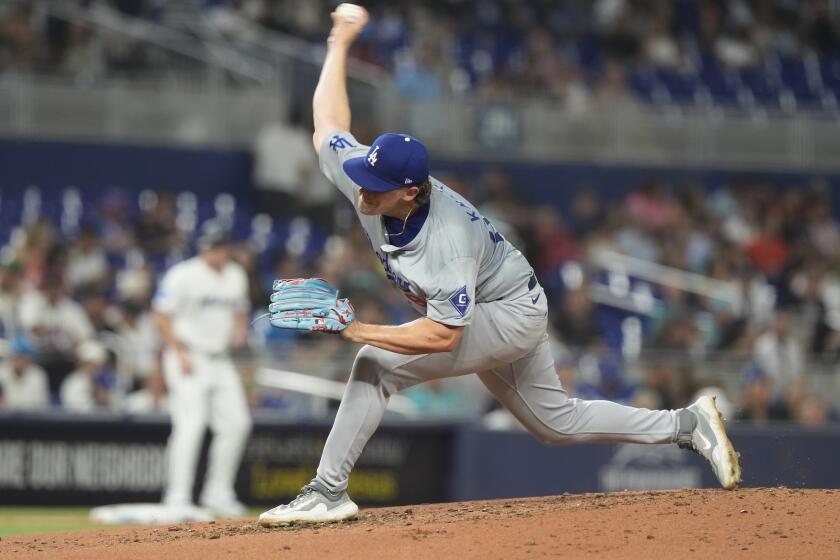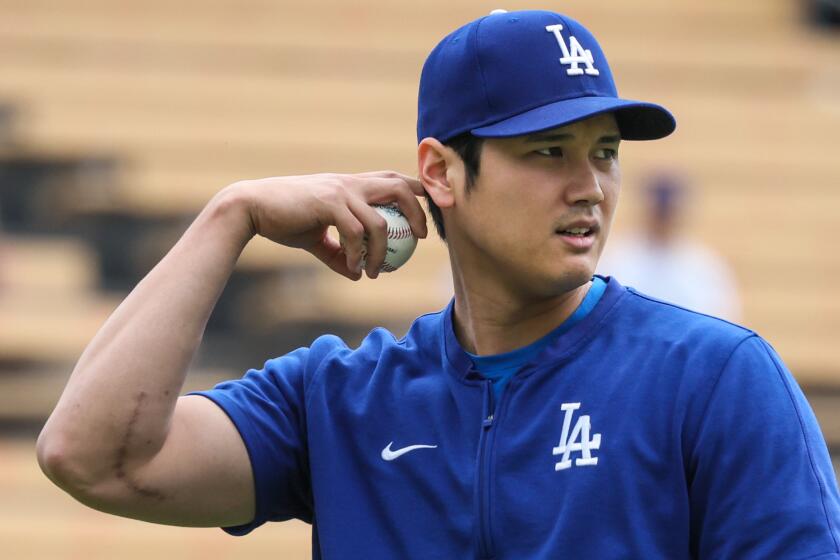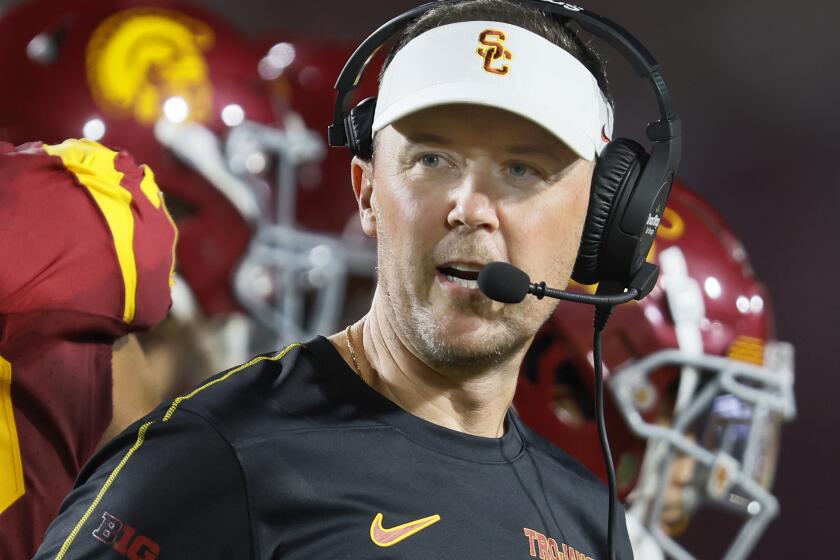If Anything, This Juicy Story Sure Has Legs
Pitchers and catchers report to training camps this week, just in time to field questions about reports of infielders and outfielders doing steroids.
It is baseball’s new rite of spring: Write a book, or threaten to write a book, that points fingers, names names and smears careers -- and then kick off the promotional tour by hooking up with a television network interested in the same objective as you, which is to build an audience.
CBS and Fox News Channel both took the plunge with Jose Canseco this weekend. CBS got the juicier interview -- more mud, with big, specific targets -- by pairing Canseco with Mike Wallace on “60 Minutes” Sunday night. Fox News Channel aired a less recent, more reserved interview with Canseco on Saturday -- Canseco obviously saving his best stuff for the big time -- but countered with fresh accusations from Kimberly Bell, Barry Bonds’ alleged former mistress.
Canseco has a book out in the stores today titled, “Juiced: Wild Times, Rampant ‘Roids, Smash Hits and How Baseball Got Big.” Bell is writing a book with the working title “Bonds’ Girl.” Sometimes you can judge a book by the words on its cover, even before it has been released, or even written.
Canseco told Wallace that Mark McGwire used steroids, that Jason Giambi used steroids, that some of baseball’s biggest names of the last 20 years used steroids, several of them schooled in the intricacies of doping by the notorious “Chemist” himself, Canseco.
Bell told Geraldo Rivera that Bonds used steroids, admitted to her that he was using steroids and showed signs of using steroids, exhibiting everything from acne on his back to “a great deal of bloating” to the kind of aggressive behavior typically associated with “ ‘roid rage.”
Should anyone believe Canseco or Bell, both over-equipped with axes to grind and agendas to push?
Canseco, once considered the “Bash Brother” most likely to break Roger Maris’ home run record and make the Hall of Fame, was outstripped by McGwire in both competitions. Bell, who unsuccessfully sued Bonds for palimony, says she is writing her book to earn “the equivalent of what was owed to me” by Bonds.
“Kimberly, are you a gold-digger?” Rivera asked Bell at one point during their interview.
Meanwhile, in the “60 Minutes” piece, Tony La Russa, who managed Canseco and McGwire when both played for the Oakland Athletics in the 1980s and 1990s, listed Canseco’s motivations in this order: “First of all, I think he’s in dire straits and needs money. Secondly, I think there’s a healthy case of envy and jealousy.”
So credibility is an issue in both cases. But in terms of recent hard-to-believe quotes about steroids in baseball, nothing offered by Canseco or Bell comes close to the outlandish nonsense uttered by Major League Baseball Commissioner Bud Selig when asked when he first became aware of steroid rumors within his sport.
“I never even heard about it,” Selig told Associated Press last week. “I ran a team and nobody was closer to their players and I never heard any comment from them. It wasn’t until 1998 or ’99 that I heard the discussion.”
News must travel slowly to Milwaukee. Steroid rumors and Canseco go back to at least a decade earlier; during the “Bash Brothers” heyday of the late 1980s, there was media speculation about steroid-laced concoctions known as “Canseco milkshakes.” By the end of the 1980s, another new ritual had been established at spring training camps -- watching familiar faces report with unfamiliar bodies and wondering if all that astonishing muscle gain over the winter was really because of a sudden dedication to the off-season weight room.
Selig’s hear-no-evil comments are telling, however. Baseball’s refusal to acknowledge, or act on, the steroid rumors of the ‘80s and ‘90s explains the mess the game finds itself in today. From baseball’s perspective, monstrous home runs and media-grabbing assaults on hallowed records were always great for business.
Look, attendance numbers are up everywhere!
Look, McGwire and Sammy Sosa are leading off “SportsCenter” again!
And what about those suspicious-looking containers in locker stalls in clubhouses across the country? Let’s not look there.
If Selig wasn’t hearing it until ’98 or ‘99, he will be making up for lost time this season. BALCO cast a dreary cloud over the 2004 baseball season, but that was only the prelude to 2005, the year Bonds sets out after the most famous home-run numbers of all -- Babe Ruth’s 714 and Hank Aaron’s 755 -- with suspicion accompanying every swing and every highlight.
Bonds, with 703 career home runs, will not be chasing Ruth and Aaron by himself. His entourage grows bigger by the week, taking on a new rumor here, more innuendo there, another book deal coming.
It’s not going to go away, especially when there’s money to be made and ratings to be had.
“We’ve asked Major League Baseball to respond to what you’ve seen tonight,” Wallace said at the end of Sunday’s report on Canseco. “So we’ll have that and more from Jose Canseco on ’60 Minutes Wednesday.’ ”
So CBS gets another week of publicity out of the Canseco story. In television, that kind of story is known as a performance enhancer.
More to Read
Go beyond the scoreboard
Get the latest on L.A.'s teams in the daily Sports Report newsletter.
You may occasionally receive promotional content from the Los Angeles Times.

